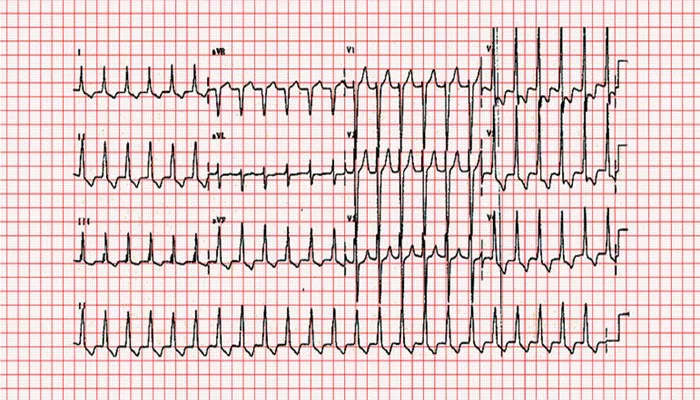Atrial flutter is a type of arrhythmia, which means the heart beats in an irregular pattern. In this condition, the upper chambers of the heart, known as the atria, beat rapidly and can lead to various complications, including stroke and heart failure. Understanding how to treat atrial flutter is crucial for managing symptoms and reducing risks. This article outlines the eight best treatments for atrial flutter, helping patients and their families make informed decisions about care.
What Is Atrial Flutter?
Atrial flutter occurs when the electrical signals in the heart become disorganized, causing the atria to beat at an unusually fast rate, often between 250 and 350 beats per minute. This rapid heartbeat can cause symptoms like palpitations, shortness of breath, fatigue, and dizziness. While atrial flutter is not immediately life-threatening, it can lead to serious complications if left untreated.
The primary goals of treating atrial flutter are to:
Slow the heart rate.
Restore normal heart rhythm.
Prevent blood clots and reduce the risk of stroke.
The 8 Best Treatments for Atrial Flutter
1. Medications to Control Heart Rate
The first step in treating atrial flutter often involves medications that help control the heart rate. These medications can help the heart pump blood more efficiently and reduce symptoms.
Beta-Blockers: These drugs, such as metoprolol and atenolol, work by blocking the effects of adrenaline on the heart. They help lower the heart rate and reduce blood pressure.
Calcium Channel Blockers: Medications like diltiazem and verapamil can also be used to slow the heart rate. They relax the blood vessels and decrease the heart’s workload.
Digoxin: This medication is sometimes prescribed for patients with heart failure. It helps strengthen the heart’s contractions and slow the heart rate.
2. Antiarrhythmic Medications
If controlling the heart rate is not sufficient, doctors may prescribe antiarrhythmic medications to restore a normal heart rhythm.
Amiodarone: This is one of the most commonly used antiarrhythmic drugs. It helps restore normal heart rhythm and is effective in many patients with atrial flutter.
Flecainide and Propafenone: These medications can also be used to convert atrial flutter back to a normal rhythm. They work by blocking certain electrical signals in the heart.
Sotalol: This drug is another option for maintaining normal rhythm after conversion. It helps prevent future episodes of atrial flutter.
SEE ALSO: How Does Arrhythmia Relate to Sudden Cardiac Death
3. Cardioversion
Cardioversion is a procedure that uses electrical shocks to restore a normal heart rhythm. It can be performed in two ways:
Electrical Cardioversion: This is a common procedure where electrodes are placed on the chest. A controlled electrical shock is delivered to the heart, helping to reset its rhythm. This method is effective for many patients and can be done in a hospital setting.
Chemical Cardioversion: In some cases, medications may be used to convert atrial flutter to normal rhythm. This approach is less common than electrical cardioversion but can be effective in certain situations.
4. Catheter Ablation
Catheter ablation is a minimally invasive procedure that aims to cure atrial flutter. It involves the following steps:
Catheter Insertion: A thin, flexible tube called a catheter is inserted into a blood vessel and guided to the heart.
Energy Delivery: Once in place, the catheter delivers energy (either radiofrequency or cryotherapy) to specific areas of the heart. This energy creates small scars that block the abnormal electrical signals causing atrial flutter.
Effectiveness: Catheter ablation is considered one of the most effective treatments for atrial flutter, with a success rate of 70% to 90%. Many patients experience significant improvement or complete resolution of their symptoms.
5. Anticoagulant Medications
Atrial flutter increases the risk of blood clots forming in the heart, which can lead to stroke. To prevent this, doctors often prescribe anticoagulant medications.
Warfarin: This traditional blood thinner has been used for many years to reduce the risk of stroke in patients with atrial flutter.
Direct Oral Anticoagulants (DOACs): Newer medications like apixaban, rivaroxaban, and dabigatran are often preferred due to their ease of use and fewer dietary restrictions. These medications effectively reduce the risk of stroke without the need for regular blood monitoring.
6. Lifestyle Modifications
In addition to medical treatments, making certain lifestyle changes can help manage atrial flutter and improve overall heart health.
Diet: Eating a heart-healthy diet that is low in salt, saturated fats, and sugar can help control blood pressure and cholesterol levels.
Incorporating more fruits, vegetables, whole grains, and lean proteins is beneficial.
Exercise: Regular physical activity can improve cardiovascular health and help maintain a healthy weight. Patients should consult their doctor about safe exercise options.
Avoiding Stimulants: Reducing or eliminating caffeine, nicotine, and alcohol can help decrease the frequency of atrial flutter episodes. These substances can trigger arrhythmias in some individuals.
7. Monitoring and Follow-Up Care
Regular monitoring and follow-up care are essential for managing atrial flutter effectively.
Routine Check-Ups: Patients should have regular appointments with their cardiologist to monitor heart health and assess the effectiveness of treatments.
Electrocardiograms (EKGs): Periodic EKGs can help track the heart’s rhythm and detect any changes that may require adjustments in treatment.
Symptom Diary: Keeping a diary of symptoms, triggers, and medication use can help patients and doctors identify patterns and make informed decisions about treatment.
8. Advanced Therapies
In some cases, advanced therapies may be considered for patients with persistent or recurrent atrial flutter.
Left Atrial Appendage Closure: For patients who cannot tolerate anticoagulant medications, this procedure can help reduce the risk of stroke by closing off the left atrial appendage, where blood clots often form.
Hybrid Approaches: Combining catheter ablation with other treatments, such as surgical interventions, may be beneficial for certain patients. This approach can enhance the effectiveness of treatment and improve outcomes.
Conclusion
Atrial flutter is a manageable condition with various treatment options available. The best approach often involves a combination of medications, procedures, lifestyle changes, and regular monitoring. By working closely with healthcare providers, patients can effectively manage their atrial flutter, reduce symptoms, and lower the risk of complications.


